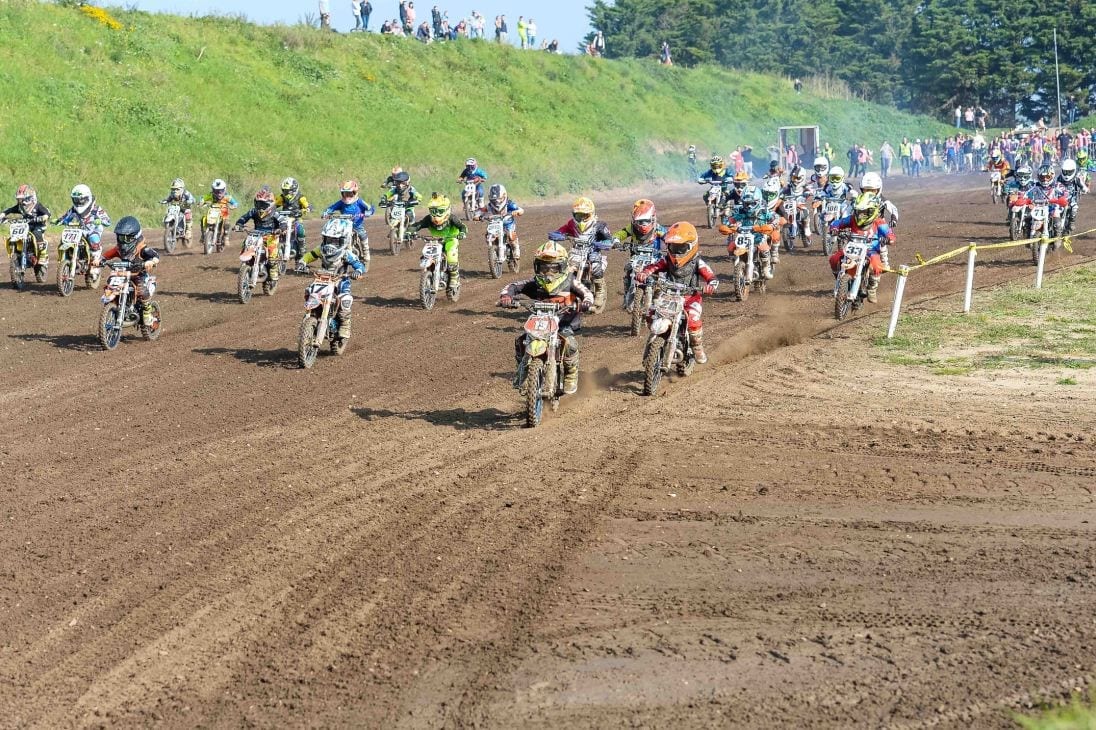TMX Says: Money talks
By TMX Archives on 25th May 16

I had a fairly interesting chat with someone who really knows their stuff last week about the sustainability of club motocross in its current state.
His fear – and he put up a very convincing argument to support it – is that unless clubs/promoters start charging more for race entries then they're really putting themselves at a huge risk every time they attempt to run.
If I think back to when I started racing in the late eighties then the sport was different to how it is now.
Back then it used to cost very little – by comparison – to run a ‘scramble' with a farmer wanting £500 or less to rent out a field, the St John first aiders costing next to nowt and insurance a whole lot cheaper than it is today too. Other than that what costs were there?
A few quid on trophies maybe, possibly a small ad in the local paper or TMX and then pretty much everything else was covered by volunteers – track building, marshalling, lap scoring, digging the hole for the toilets etc.
It was fairly uncommon to ride a graded track back then and we frequently raced around these bumpy old farmers' fields in blinding dust clouds – by Braille – as watering and man-made berms, humps and jumps were either a real treat or something from the world of tomorrow...
During that time entry fees were around the £20 mark but over the next decade-and-a-half or so they pretty much doubled as the cost of running events increased. Obviously over that period we'd moved onto racing watered, graded race tracks with a plethora of man-made obstacles that cost much more to build or hire.
To offset those additional costs we still had a troop of volunteers running stuff including ‘beady-eyed Doris and her gang of cackling cohorts' in charge of both running the raffle and compiling results. The threat of ‘no bib, no points' was still very real at the numerous mudders the British summer provided.
More often than not we'd have to supply a marshal n'all or else entries would be declined on the day...
Moving to modern times now and it's become pretty normal for racers to fully expect graded, watered and ripped GP-standard racetracks – you honestly don't wanna know how much it costs to hire one of these for the weekend.
There's also an expectation for decent toilets, a team of trained medics and marshals on standby plus electronic scoring courtesy of big budget transponder systems – these all cost money.
Trophies down to a millionth place seem to be quite normal now too and then if that weren't expense enough there are the exorbitant insurance costs – driven up by parasitic no win, no fee claim specialists – and dreaded affiliation fees to contend with.
Basically it's not cheap to run a race meeting in 2016 is the point I'm making here yet entry fees are pretty much the same as they were back in the noughties – even cheaper in some cases. So how does that work?
Obviously the formula for breaking even is the same as it ever was – x number of entrants are needed to cover the basic costs and anything above that is happy days – but with a much larger financial commitment needed even to give riders an opportunity of racing then the risk of a club being totally wiped out by a low entry is bigger than ever.
That means more and more clubs are having to play it safe and cancel ahead of any costs being incurred or they roll the dice and pray that enough riders are going to turn up on the day wanting to race at their event. Either way and whatever the outcome we're potentially looking at having fewer races on the calendar which is no good for anyone.
It's gonna take a brave club to take the lead and put up their race fees so they have a little in reserve to get them through those rainy days but, being realistic for a moment, if that's what it takes to protect their future then maybe it's not too big a price to pay.
Let me know your thoughts by email at anthony.sutton@jpress.co.uk


